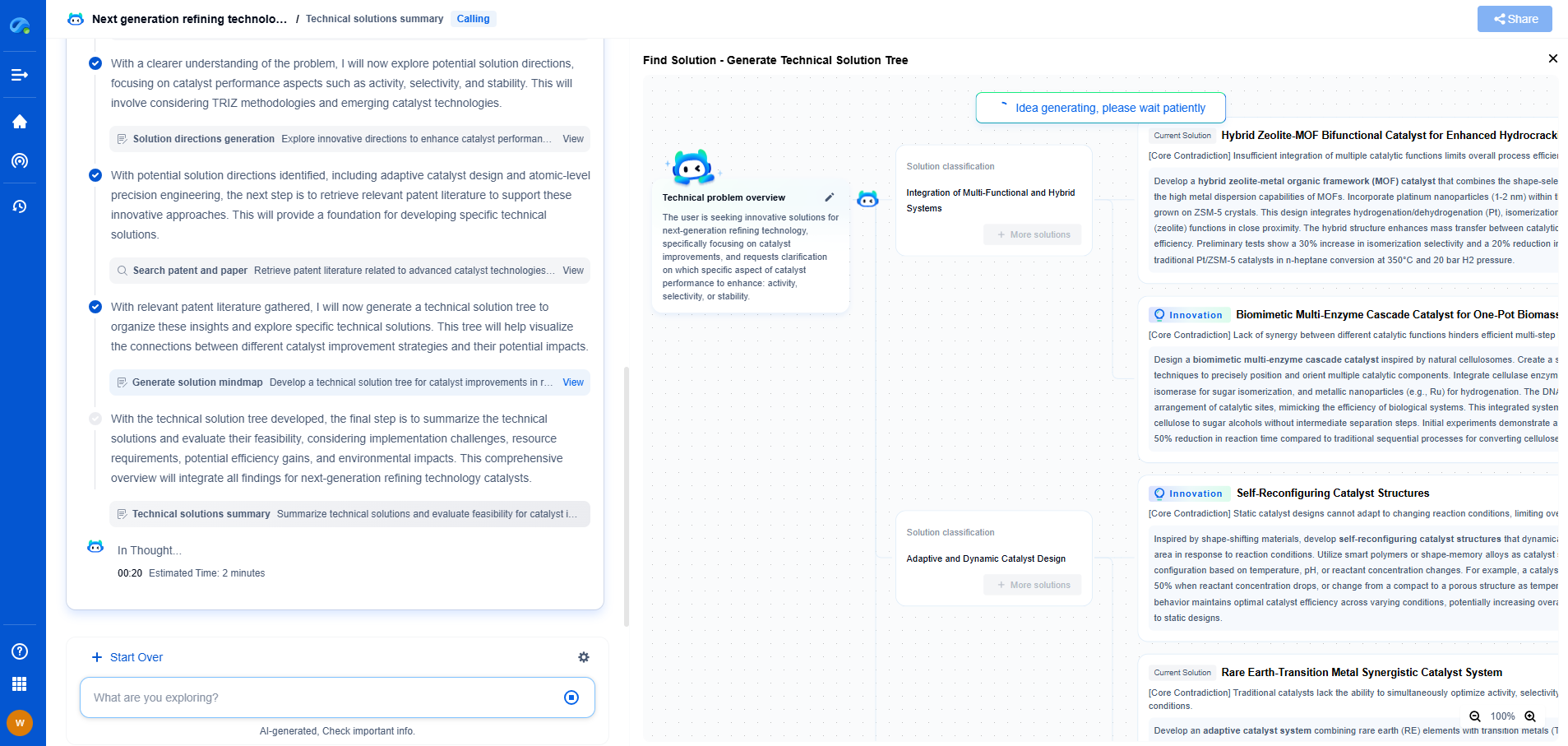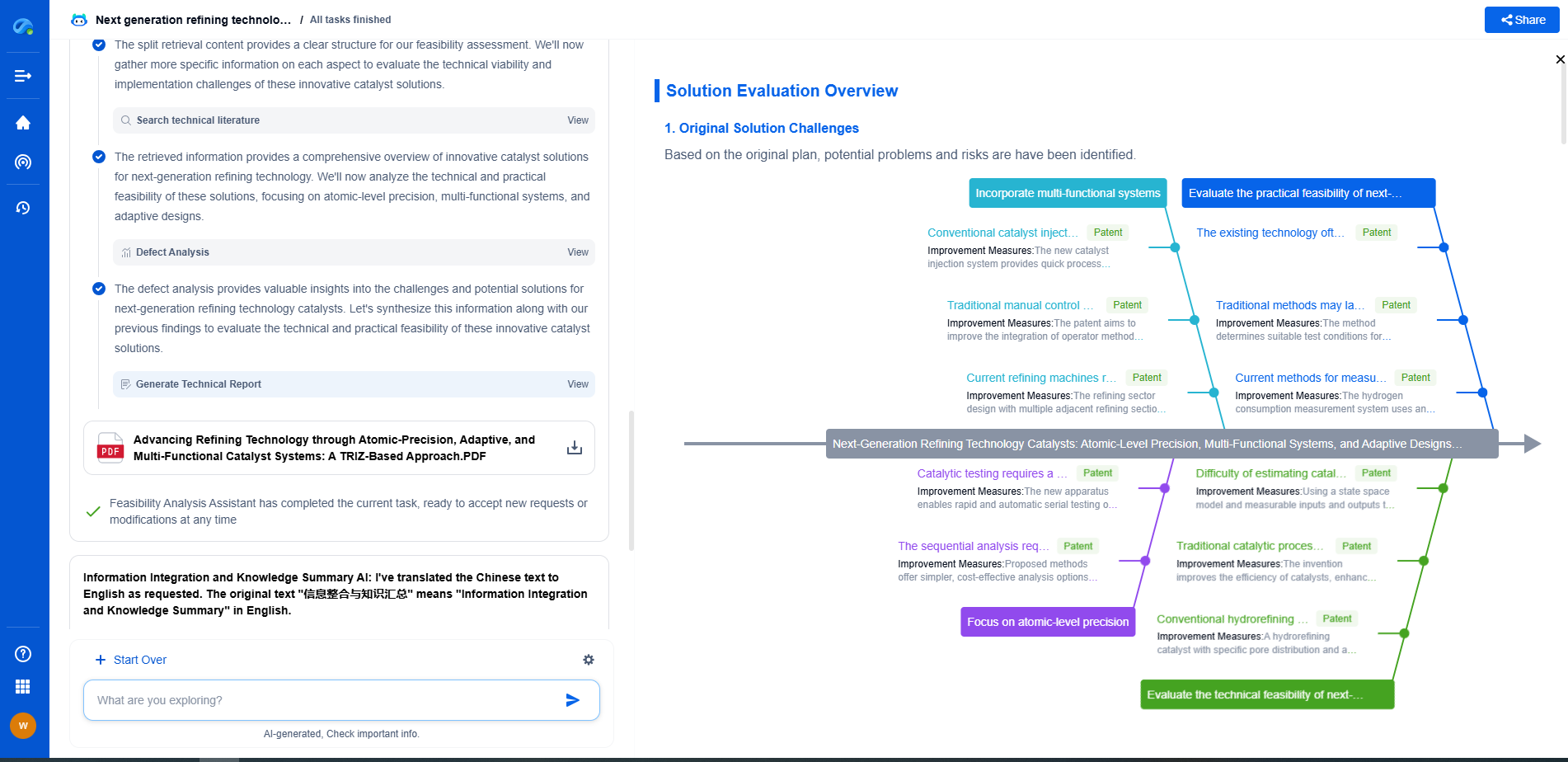Advanced Model Quantization Techniques (INT8, FP16, etc.)
JUL 4, 2025 |
Model quantization is a powerful technique in the field of deep learning, aimed at optimizing machine learning models for deployment, especially in resource-constrained environments like mobile devices and embedded systems. By reducing the precision of the numbers used in computations, quantization can significantly decrease the model size and improve inference speed, often with minimal impact on accuracy. Let's explore some advanced model quantization techniques, particularly focusing on INT8 and FP16, and understand how they contribute to the efficiency of neural network models.
Understanding INT8 Quantization
INT8 quantization reduces the precision of model parameters from floating-point 32-bit (FP32) to integer 8-bit (INT8). This change dramatically reduces the model size and computational overhead, allowing for faster execution and lower power consumption. INT8 quantization is particularly beneficial for inference on hardware accelerators, such as those found in edge devices.
The key to successful INT8 quantization lies in maintaining the model's accuracy. Techniques such as static and dynamic range quantization, post-training quantization, and quantization-aware training have been developed to address this challenge. Static range quantization, for example, involves pre-computing the range of activations and weights, while dynamic range quantization allows for runtime flexibility. Quantization-aware training, on the other hand, incorporates quantization effects during the training phase itself, leading to more robust models that can withstand the reduced precision.
FP16 Quantization: Balancing Precision and Performance
FP16, or half-precision floating-point, quantization is another technique used to reduce model complexity while maintaining a balance between performance and precision. Unlike INT8, FP16 retains some floating-point properties, which makes it less aggressive in reducing precision but still effective in accelerating computations and reducing memory usage.
FP16 quantization is particularly useful in GPUs and TPUs that are optimized for half-precision calculations. It offers a good trade-off between speed and accuracy for training large-scale models. By employing mixed-precision training, where some parts of the model use FP16 and others use FP32, practitioners can achieve optimal performance gains while preserving model quality.
Comparing INT8 and FP16 Quantization
While both INT8 and FP16 quantization methods aim to improve model efficiency, they each have unique advantages and trade-offs. INT8 quantization is more suitable for inference tasks and provides more significant reductions in model size and latency. However, it requires careful calibration to prevent accuracy degradation. FP16, with its higher precision, is better suited for training environments and can handle a broader range of dynamic values.
The choice between INT8 and FP16 quantization depends on the specific use case, available hardware, and tolerance for accuracy loss. For instance, in scenarios where extreme latency reduction is crucial, such as real-time applications on edge devices, INT8 might be preferable. Conversely, in training and scenarios where maintaining precision is essential, FP16 could be the better option.
Practical Considerations for Implementing Quantization
When implementing quantization, several practical considerations must be taken into account to maximize the benefits. These include selecting the appropriate quantization technique, ensuring compatibility with the deployment environment, and fine-tuning hyperparameters during quantization-aware training.
Moreover, leveraging existing frameworks and toolsets such as TensorFlow Model Optimization Toolkit, PyTorch Quantization Toolkit, and NVIDIA's TensorRT can streamline the quantization process. These tools offer pre-built functions and workflows that simplify the transition from full-precision to quantized models.
Future Directions in Quantization Research
As the field of deep learning evolves, so do quantization techniques. Researchers are continually exploring new methods to push the boundaries of what is possible with lower precision computations. Innovations such as adaptive quantization, which dynamically adjusts precision based on the data or task requirements, and hybrid quantization, which combines multiple precision levels within a single model, represent exciting future directions.
Conclusions
Advanced model quantization techniques like INT8 and FP16 have revolutionized the deployment of neural networks in constrained environments by balancing performance, accuracy, and resource efficiency. As hardware capabilities and quantization methods continue to advance, they promise to unlock even greater potential for deploying sophisticated models across diverse applications. Embracing these techniques will undoubtedly be a key factor in the future success of AI-powered solutions.
Accelerate Breakthroughs in Computing Systems with Patsnap Eureka
From evolving chip architectures to next-gen memory hierarchies, today’s computing innovation demands faster decisions, deeper insights, and agile R&D workflows. Whether you’re designing low-power edge devices, optimizing I/O throughput, or evaluating new compute models like quantum or neuromorphic systems, staying ahead of the curve requires more than technical know-how—it requires intelligent tools.
Patsnap Eureka, our intelligent AI assistant built for R&D professionals in high-tech sectors, empowers you with real-time expert-level analysis, technology roadmap exploration, and strategic mapping of core patents—all within a seamless, user-friendly interface.
Whether you’re innovating around secure boot flows, edge AI deployment, or heterogeneous compute frameworks, Eureka helps your team ideate faster, validate smarter, and protect innovation sooner.
🚀 Explore how Eureka can boost your computing systems R&D. Request a personalized demo today and see how AI is redefining how innovation happens in advanced computing.
- R&D
- Intellectual Property
- Life Sciences
- Materials
- Tech Scout
- Unparalleled Data Quality
- Higher Quality Content
- 60% Fewer Hallucinations
Browse by: Latest US Patents, China's latest patents, Technical Efficacy Thesaurus, Application Domain, Technology Topic, Popular Technical Reports.
© 2025 PatSnap. All rights reserved.Legal|Privacy policy|Modern Slavery Act Transparency Statement|Sitemap|About US| Contact US: help@patsnap.com

